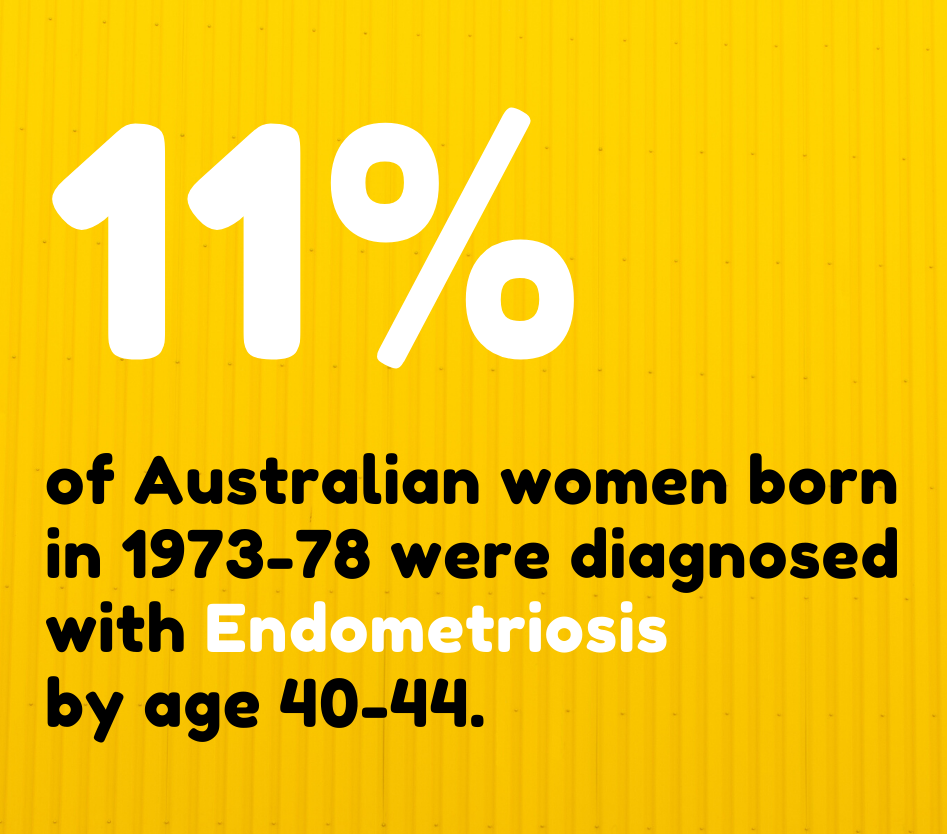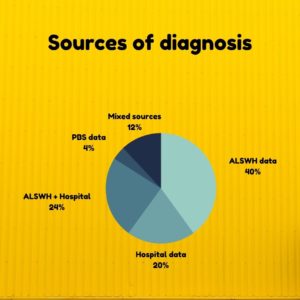Estimating the prevalence of Endometriosis using linked data

Endometriosis is a debilitating inflammatory disease, occurring when tissue that usually lines the uterus grows on other organs. It causes scarring, chronic painful periods, heavy menstrual bleeding, bowel and bladder pain, and sometimes infertility.
Unfortunately for the many women with suspected Endometriosis, diagnosis is challenging. The symptoms can mimic other conditions and in the past have been dismissed or not recognised by doctors. Surgery is currently the only way to diagnose the condition accurately. However, an important philosophical shift is moving doctors towards clinical diagnosis which is increasingly accurate and far less invasive.
The challenges of diagnosis mean that we know little about the disease in Australia. Previous estimates of Endometriosis rates were based on international studies. Reliable, up-to-date statistics for Endometriosis are urgently needed to inform guidelines, clinical practice, and policy decisions relevant to Australian women.
National Action Plan for Endometriosis
In 2018, the Honourable Greg Hunt, Minister for Health announced the National Action Plan for Endometriosis to improve awareness and understanding of the condition. ALSWH was identified as a unique data source with the capabilities to advance knowledge in the field. As part of the Plan, we were engaged to estimate – for the first time – the national prevalence of endometriosis in Australia.
Using linked data to estimate disease prevalence

We used data from more than 14,000 participants in the ALSWH 1973-78 cohort to count the number of women who said they had been diagnosed with endometriosis by a doctor and linked this information to their hospital and medication records.
Databases included the Medicare Benefits Scheme (MBS), the Pharmaceutical Benefits Scheme (PBS), and the Admitted Patient Data Collections (Hospital data), which contains records for all hospital separations from public and private hospitals and day procedure centres. The surveys and administrative data were linked to individual women. This meant that their endometriosis diagnosis could come from one, or many sources.The participants were first asked in Survey 2 (2000) if they had ever been told by a doctor that they had Endometriosis. At subsequent 3-yearly surveys they were asked if they had been diagnosed with, or treated for Endometriosis.
Clinically confirmed endometriosis included women who had a hospital discharge diagnosis of Endometriosis recorded in their hospital data. Clinically suspected endometriosis included women who only had a record of endometriosis in the ALSWH survey data or the MBS or PBS data.
Prevalence of Endometriosis in Australia
Participant data showed that endometriosis is a widespread condition affecting 11% of Australian women in their lifetime. The prevalence rate is similar to, or higher than, other chronic diseases including asthma (11%), diabetes (4%), and heart disease (4%). It is important to note that 6% of women had a clinically confirmed diagnosis and the remaining 5% had a clinically suspected diagnosis.
Around 1 in 15 (6.6%) women born in 1989–95 were estimated to have been diagnosed with endometriosis by age 25–29—a figure that is 1.7 times as high as for women born in 1973–78 at the same age.
Citation
, , , , , . Prevalence and incidence of endometriosis in Australian women: a data linkage cohort study. BJOG 2020; https://doi.org/10.1111/1471-0528.16447. 00: 1– 9.

